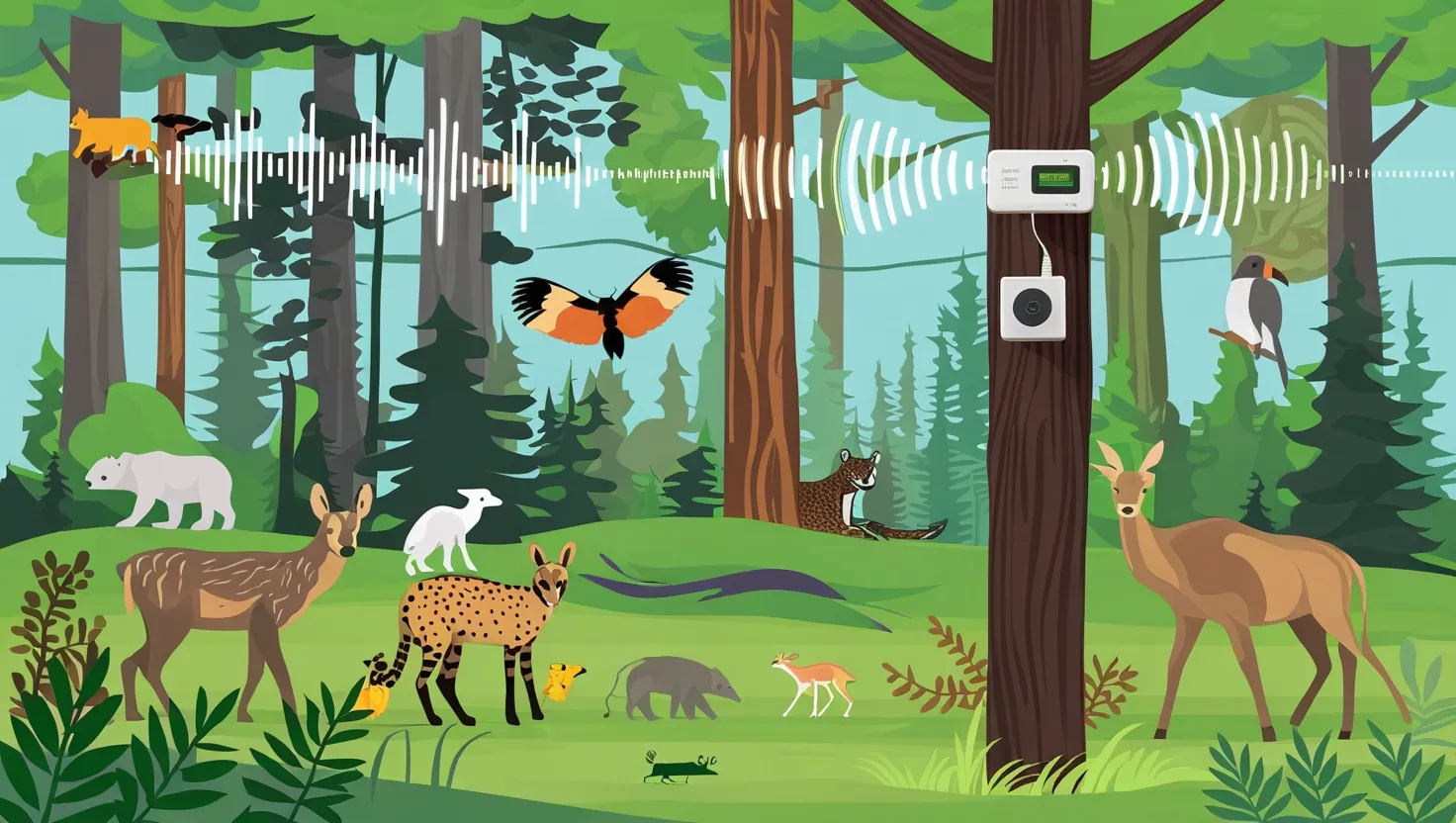As I step into the heart of a dense forest, the sounds that envelop me are more than just a cacophony of noise; they are a symphony that tells a story of life, health, and the intricate balance of nature. This is the realm of bioacoustics, a fascinating field that delves into the sounds produced by living organisms and their interactions with the environment.
Bioacoustics is not just about recording animal sounds; it’s a complex study that reveals the hidden melodies, rhythms, and harmonies of the natural world. Researchers like Zuzana Burivalova are at the forefront of this field, using bioacoustics to gauge the impacts of human activities on wildlife and to preserve the biodiversity of ecosystems. Burivalova’s work involves affixing small, sensitive recorders to trees in remote and inaccessible areas, such as the Indonesian forest, to capture the vocalizations of animals over several hundred meters. These recordings provide an acoustic window into the forest’s health, allowing scientists to assess the richness of biodiversity and detect human disturbances like chainsaws or gunshots.
One of the most compelling aspects of bioacoustics is its ability to monitor biodiversity. By analyzing the soundscape of an ecosystem, researchers can identify the presence or absence of specific species. For instance, the calls of certain bird species can indicate the overall health of a forest. If these calls are absent or reduced, it may signal a decline in biodiversity. This method is particularly useful in remote and hard-to-reach areas where traditional monitoring methods are impractical.
The field of bioacoustics also sheds light on the behavioral patterns of animals. By studying the vocalizations of different species, scientists can understand how animals communicate with each other and their environment. For example, the Elephant Listening Project uses sound recorders to monitor elephant communication and detect poachers. Advanced algorithms can automatically identify gunshots and elephant calls, enabling rangers to intervene quickly and effectively.
Climate change is another critical area where bioacoustics plays a significant role. Changes in temperature and humidity can alter the physical movement of sound waves, affecting how species communicate. Unusual weather conditions like extreme rain, heatwaves, wildfires, and droughts can disturb the natural soundscapes, leading to changes in the vocalizations of species. In the Amazon, forests that have experienced recurrent fires are starkly quieter, with a smaller range of voices compared to those that have been burned just once or logged and left to recover.
The technology behind bioacoustics is rapidly evolving, making it more accessible and powerful. Affordable devices, data-hungry computers, and powerful algorithms are revolutionizing sound capture, analysis, and interpretation. Machine learning algorithms, for instance, can seek patterns in the sounds to answer complex questions about ecosystems. Researchers are using remote sensing from the International Space Station to develop global models of how climate heating is changing ecosystems, pairing biome soundscapes with maps of habitats.
In addition to its applications in conservation, bioacoustics is also being explored for its potential in urban planning. By understanding the impact of human-generated noise on natural habitats, cities can be designed to minimize noise pollution and create more harmonious environments for both humans and wildlife. For example, studies have shown that playing healthy soundscapes in degraded marine ecosystems can help restore them. In North Carolina, researchers have used the sounds of healthy oyster reefs to encourage oyster larvae to settle and rebuild damaged reefs.
The personal connection one can feel with nature through bioacoustics is profound. Bernie Krause, a musician and naturalist, has spent decades recording ecosystem sounds around the world. His work has shown that nearly half of the original soundscapes he recorded have vanished, leaving behind only “acoustic fossils.” This loss underscores the importance of preserving our planet’s acoustic heritage. Listening to these soundscapes with open ears can impart a sense of humility and a deep appreciation for the natural world.
Bioacoustics is also bridging the gap between humans and other species in ways that were previously unimaginable. The study of plant bioacoustics, for instance, involves capturing the subtle vibrations and electrical impulses emitted by plants and transforming them into musical compositions. Each plant species has its own unique sonic signature, ranging from delicate melodies to rhythmic pulses. This field invites listeners to attune their senses to the rhythms of the natural world, creating a deeper connection with the earth and its inhabitants.
In higher education, bioacoustics is emerging as a cutting-edge field that requires an interdisciplinary approach. Students are being equipped with a blend of core courses in biology, ecology, coding, acoustic engineering, and data analysis. This holistic education prepares them to navigate the complex terrain of bioacoustics research and application. Specializations in animal communication, bioacoustic data analysis, and soundscape ecology are attracting students who are passionate about understanding and preserving the natural world.
As I reflect on the journey into the world of bioacoustics, it becomes clear that this field is more than just a scientific study; it’s a way to reconnect with nature. By listening deeply to the sounds of the earth, we gain insights into the health of our ecosystems, the behavior of species, and the impacts of human activities. Bioacoustics is not just about understanding the natural world; it’s about preserving it for future generations.
In the midst of our bustling lives, it’s easy to overlook the subtle sounds that surround us. However, these sounds are not just background noise; they are a symphony that tells us about the world we live in. By tuning in to this symphony, we can better understand our place within the natural world and our responsibility to protect it. As we continue to explore and learn from bioacoustics, we are reminded that the true essence of healing and conservation lies not in the destination but in the journey itself – in the moments of listening, attunement, and communion with the natural world.






